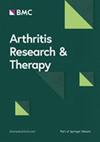Effects of chronic ankle instability after grade I ankle sprain on the post-traumatic osteoarthritis
IF 4.9
2区 医学
Q1 Medicine
引用次数: 0
Abstract
Untreated acute ankle sprains often result in chronic ankle instability (CAI) and can ultimately lead to the development of post-traumatic osteoarthritis (PTOA). At present, a typical animal model of ankle instability in mice is established by transecting the ligaments around the ankle joint. This study aimed to establish a grade I acute ankle sprain animal model by rapid stretching of peri-ankle joint ligaments. Furthermore, we tried to explore the pathophysiological mechanism of ankle osteoarthritis. In all, 18 male C57BL/6 J mice (7 weeks) were randomly divided into three groups: calcaneofibular ligament (CFL) laxity group, deltoid ligament (DL) laxity group, and SHAM group. One week after the surgical procedure, all mice were trained to run in the mouse rotation fatigue machine daily. The mice were tested on the balance beam before surgery and three days, 4 weeks, 8 weeks, and 12 weeks after surgery. Footprint analyses were performed on each mouse before surgery and 12 weeks after surgery. Micro-CT scanning was then performed to evaluate the degeneration of ankle joints and histological staining was performed to analyze and evaluate PTOA caused by ankle joint instability. After surgery, the mice in the CFL and DL laxity groups took longer to cross the balance beam and slipped more often than those in the SHAM group (p < 0.05). The step length and width in the CFL and DL laxity groups were significantly shorter and smaller than those in the SHAM group 12 weeks after surgery (p < 0.05). There was a significant increase in the bone volume fraction (BV/TV) in the CFL and DL laxity groups compared with the SHAM group (p < 0.05). Histological staining results suggested obvious signs of PTOA in the CFL and DL laxity groups. Based on CFL and DL laxity in a mouse ankle instability model, this study suggests that grade I ankle sprain can contribute to chronic ankle instability, impair motor coordination and balance, and eventually lead to PTOA of ankle with significant degeneration of its adjacent joints.I 级踝关节扭伤后踝关节长期不稳定对创伤后骨关节炎的影响
急性踝关节扭伤如不及时治疗,往往会导致慢性踝关节不稳定(CAI),并最终引发创伤后骨关节炎(PTOA)。目前,小鼠踝关节不稳的典型动物模型是通过横断踝关节周围的韧带建立的。本研究旨在通过快速拉伸踝关节周围韧带,建立 I 级急性踝关节扭伤动物模型。此外,我们还试图探索踝关节骨关节炎的病理生理机制。我们将 18 只雄性 C57BL/6 J 小鼠(7 周龄)随机分为三组:小腿腓骨韧带(CFL)松弛组、三角韧带(DL)松弛组和 SHAM 组。手术一周后,所有小鼠每天在小鼠旋转疲劳机上进行跑步训练。小鼠分别在手术前、手术后三天、4周、8周和12周在平衡木上进行测试。手术前和手术后 12 周对每只小鼠进行足印分析。然后进行显微 CT 扫描以评估踝关节的退化情况,并进行组织学染色以分析和评估由踝关节不稳引起的 PTOA。术后,CFL组和DL松弛组小鼠跨越平衡木的时间比SHAM组长,滑倒的次数比SHAM组多(P < 0.05)。术后12周,CFL组和DL松弛组小鼠的步长和步宽明显短于SHAM组小鼠(P < 0.05)。与SHAM组相比,CFL和DL松弛组的骨体积分数(BV/TV)明显增加(P < 0.05)。组织学染色结果显示,CFL 和 DL 松弛组有明显的 PTOA 征象。根据小鼠踝关节不稳模型中 CFL 和 DL 的松弛情况,本研究表明,I 级踝关节扭伤可导致慢性踝关节不稳,影响运动协调和平衡,最终导致踝关节 PTOA 及其相邻关节的显著退变。
本文章由计算机程序翻译,如有差异,请以英文原文为准。
求助全文
约1分钟内获得全文
求助全文
来源期刊

Arthritis Research & Therapy
RHEUMATOLOGY-
CiteScore
8.60
自引率
2.00%
发文量
261
审稿时长
14 weeks
期刊介绍:
Established in 1999, Arthritis Research and Therapy is an international, open access, peer-reviewed journal, publishing original articles in the area of musculoskeletal research and therapy as well as, reviews, commentaries and reports. A major focus of the journal is on the immunologic processes leading to inflammation, damage and repair as they relate to autoimmune rheumatic and musculoskeletal conditions, and which inform the translation of this knowledge into advances in clinical care. Original basic, translational and clinical research is considered for publication along with results of early and late phase therapeutic trials, especially as they pertain to the underpinning science that informs clinical observations in interventional studies.
 求助内容:
求助内容: 应助结果提醒方式:
应助结果提醒方式:


